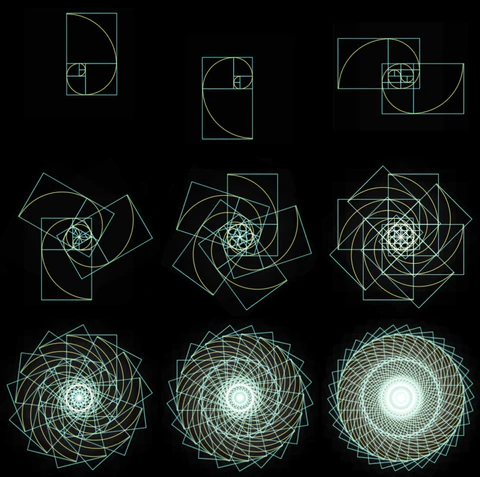In the enchanting realm of mathematics, certain patterns and sequences reveal themselves as captivating works of art. One such masterpiece, the Fibonacci Sequence, has fascinated mathematicians, scientists, and artists for centuries. Its ubiquity in the natural world and its intriguing mathematical properties make it a subject worthy of exploration.
Ask for a ruler and measure your hand and forearm. The bones of your finger (including the bone from your knuckle to your wrist) follow the Fibonacci sequence. We have 8 fingers in total, 5 digits on each hand, 3 bones in each finger, 2 bones in 1 thumb, and 1 thumb on each hand.
The story of the Fibonacci Sequence begins in the early 13th century with the Italian mathematician Leonardo of Pisa, also known as Fibonacci. While Fibonacci didn’t discover the sequence itself, his work “Liber Abaci” introduced it to the Western world. The sequence had actually been previously described in Indian mathematics.
The progression of the Fibonacci numbers and ratio are well suited to describing organic growth in the human body because they have the properties of self-similarity and of “gnomonic growth;” that is, only the size changes while the shape remains constant.
But in our day to day life we are ignoring these sequences. We should try to apply these numbers to our lifestyle.
The Fibonacci Spiral: Nature’s Blueprint


Fibonacci Spiral
The Fibonacci sequence shows up in many places, in mathematics and, remarkably, in nature. The Fibonacci sequence can describe branches on a tree, sequences in music, the number of petals on a flower, Pascal’s triangle, paintings, structural design, human anatomy, the shape of a spiral, and more.
14 Interesting Examples of the Golden Ratio in Nature
https://www.mathnasium.com/blog/14-interesting-examples-of-the-golden-ratio-in-nature








[…] How Fibonacci Effects Nature Of Humans? – Nature’s Mathematical Marvel […]